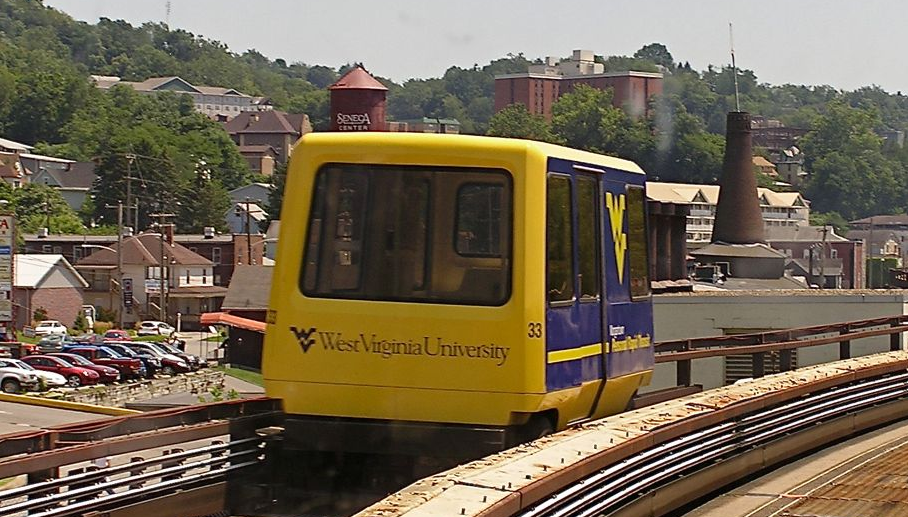Transportation Overview - part 2 of 3
Transportation Overview - part 2 of 3, advancing past the automobile

The previous article ended with the demise of streetcars and the rise of automobiles.
In the late 1800s, shortly after the invention of the automobile, its innovative technology exploded with popularity to the general public. This proliferation of popularity generated Federal regulatory involvement.
Automobile history
The United States began regulating public roads with the establishment of the Office of Road Inquiry in 1893, tasked with promoting rural road development as the first federal agency dedicated to road improvement. This agency, later renamed the Office of Public Roads in 1905 and then the Bureau of Public Roads (BPR) in 1915. This marked the beginning of a more formal federal role in highway policy and regulation. The federal government's direct involvement in road construction and regulation expanded significantly with the Federal-Aid Road Act of 1916, which authorized federal funding for state highway improvements. The Federal Aid Highway Act of 1921, transformed the BPR into a central agency for administering federal-aid highway programs.
In 1944, the Federal-Aid Highway Act was enacted. This authorized the construction of interstate highways, leading to the Federal-Aid Highway Acts of 1954 and 1956, which led to the creation of the 41,000-mile National System of Interstate and Defense Highways.
As a consequence to this new highway system, the government's involvement in automotive safety regulation intensified in the 1960s. By 1965, automobile accidents had become the leading cause of death for Americans under age 44.
A more detailed view of how the government influences US road infrastructure is available at this link from the US Department of Transportation .
Advanced Transit
The requirement for transportation’s future is sustainability. With that said, the state of the advanced transportation industry is gasping for funds. A small segment of advanced transit companies have survived for over 20 to 30 years, there’s at least one company has survived for over 40 years. This, in itself is a miraculous feat. And yet, the majority of companies have disappeared.
PRT
In 1975, the Personal Rapid Transit (PRT) industry began to flourish. The Morgantown PRT system was built in Morgantown, West Virginia to serve the West Virginia University campus and the city’s downtown area.
From the industry’s lofty beginnings, this segment of the advanced transit industry has now all but disappeared. Other than the 50 year running of the 70 vehicles running on Morgantown’s 3 ½ mile concrete track, the PRT industry has been relegated to short distance people movers, parking-lot circulators, and proposals of expanded cable car ski-lift technology, glorifying themselves as transit systems.
What happened to the PRT industry?
Throughout the 1990s and into the early 2000s, the innovative PRT industry was moving towards innovation. Innovative transportation engineers and entrepreneurs began pursuing modern transportation solutions to minimize traffic, and a new industry began: personal rapid transit. In the 1990s there were over 100 independent companies involved in research and prototype development. Link to Jerry’s work. Over half of these companies produced prototypes with the hope that their designs would capture the attention of municipalities and be used as transportation systems for the next step in urban growth. In the late 90s throughout the early 2000s, the personal computer industry shrunk computers and expanded the market into mobile phones. The larger computer tech companies bought the smaller successful companies which exploded the personal computer and phone industry into mega conglomerates to market their products further. With massive profits in the computer industry, it bought political power. The computer industry noticed financial potential of the transportation industry and entered the autonomous car market with satellite connectivity. This annihilated the growth of the underfunded PRT potential.
There are many examples of catastrophic financial failures in the rising advanced transit industry. General Atomics had a large investment with its Inductrac project. When showcasing its magnificent magnetic levitation success at the annual premier Maglev Technology global event in the early 2000s, during the question and answers session, following their tremendously successful testing and announcement of their potential industry launch phase, an audience member asked a simple question: “Where’s your switch?” The word ‘switch’ indicates a transit vehicle or train to ‘switch’ from one track to a different track. Millions of dollars were spent on developing a maglev vehicle that doesn’t have a switch. The technology was immediately mothballed and forgotten.
As autonomous vehicle testing continued, and the computer industry lobbyists provided legislative policy provision allowances, the autonomous vehicle market was introduced in the 2000s and is now commonplace.
Introduced in 2013 was Elon Musk’s Hyperloop white-paper. One of the first investors was Hyperloop One. The software financiers looking to cash-in on the potential profits from the transportation industry, hired over 200 young and enthusiastic engineers to produce a new concept in transportation. The management concept in transportation research and development is extremely different than the computer industry. Inexperience and blind management ignorance is a brutal teacher. The consequence was a total investment waste of over $200million. Although early tests were tremendous, their strategy didn’t foresee the necessities of merging the hyperloop concept into the existing urban landscape.
Advanced transportation is the immediate future
What does all this have to do with the future of transportation and floating cars? Societal change is incremental. History reveals that effects of changing a mode of transportation has a direct impact to the natural flow of urban growth. Sustainability in transportation and urban growth is vital.
Politics of transportation
Transportation is a nonpartisan issue. With the large sums of money involved in both urban growth and transportation, the money makes it extremely divisive politically. As time passes and the bureaucracy of government increases, political divisiveness multiplies unfamiliarity into transportation dysfunction.
The current governmental trend for alternative transportation is predicated by the strength of entrenched lobbyists. With the power established by lobbying efforts, the status-quo of antiquated transit technology is an unsurmountable challenge for change.



